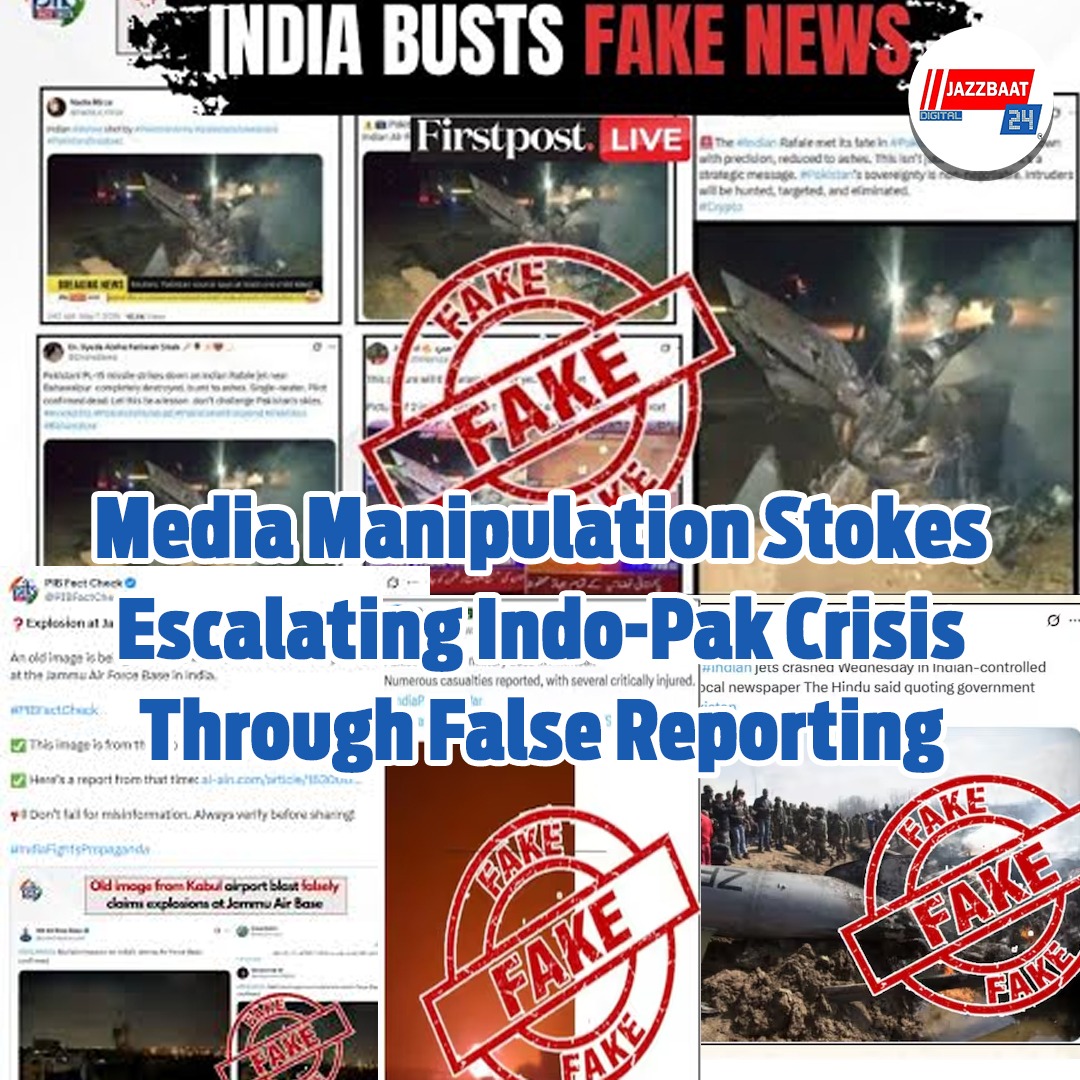
Aadil Abdullah
Srinagar, May 10: With the military tensions flare between India and Pakistan, journalists and media watchdogs are raising alarms about the dangerous spread of misinformation by news outlets on both sides of the conflict, with some broadcasters airing fabricated videos, recycled footage from other conflicts, and unverified claims presented as fact.
The dangerous proliferation of misinformation comes at a particularly sensitive moment, with both nuclear-armed nations maintaining heightened military alert levels along their contested borders.
The crisis reached a troubling turning point earlier this week when several of India's most-watched news channels, simultaneously broadcast dramatic reports claiming Indian armored units had crossed into Pakistani territory. The segments were accompanied by sensational production elements, blaring war sirens, flashing red "BREAKING NEWS" banners, and breathless commentary from anchors.
The claims, which were later categorically denied by official military sources, had already spread like wildfire across social media platforms, shared by millions before corrections could be issued.
In what media analysts are calling a systemic failure of verification protocols, numerous examples have emerged of established news organizations abandoning basic journalistic standards. NDTV, traditionally regarded as one of India's more credible broadcasters, mistakenly aired footage of Israel's Iron Dome missile defense system while presenting it as India intercepting Pakistani drones. The network issued an on-air correction the following day, but not before the misleading segment had been viewed by millions. Even more troubling are the cases of completely fabricated content entering the news cycle.
The phenomenon is equally prevalent in Pakistani media, creating a dangerous feedback loop of misinformation. journalist Hamid Mir, a household name in Pakistan, shared footage from a 2018 Thai military exercise while claiming it showed Israeli drones attacking Pakistani territory. Geo News, one of Pakistan's largest news networks, aired decade-old video clips of aircraft crashes while asserting they showed recent downings of Indian jets. Social media has amplified these falsehoods exponentially, with one viral post from an account with 266,000 followers using footage of the 2020 Beirut port explosion while claiming it showed Pakistan's retaliation against Indian missile strikes.
The real-world consequences of this media free-for-all are already becoming apparent.
Media analysts point to several structural factors enabling this dangerous situation. The relentless 24-hour news cycle creates immense pressure to be first rather than accurate, with some Indian channels running continuous "live war coverage" banners for 72 hours straight despite limited actual developments. Many news desks are relying on general assignment reporters with little expertise in military affairs or South Asian geopolitics, leading to fundamental misunderstandings being broadcast as fact. Perhaps most concerning is the role of social media algorithms that prioritize engagement over accuracy, creating a perfect storm where the most sensational and often least factual content spreads furthest and fastest.
With both nations continue their military posturing, the role of responsible journalism has never been more critical. As India and Pakistan maintaining nuclear arsenals on high alert, the spread of misinformation, whether through human error, systemic failure, or deliberate manipulation, threatens to turn political brinkmanship into uncontrollable conflict.
In an era where AI can fabricate convincing battle footage and national broadcasters willingly spread unverified claims, the most dangerous frontlines may not be in Kashmir's mountains, but in the smartphones and television screens of billions who can no longer distinguish between journalism and propaganda.